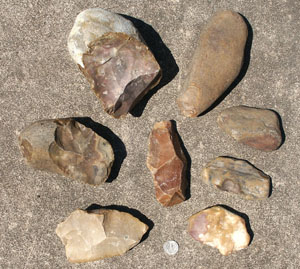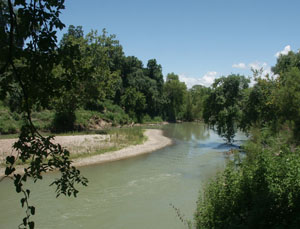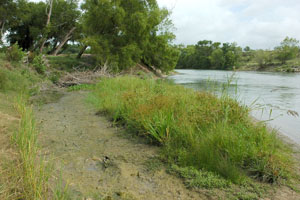Guadalupe gravels
The gravel bars along the Guadalupe River on the eastern edge of the South Texas Plains contained many cobbles of chert, quartzite, and other materials suitable for tool making. In comparison to the river gravels found in other of the region's gravels, only those found in the upper Nueces River rival those found along the Guadalupe River in terms of size and quality. For basically the same reason, both rivers drain the chert-bearing limestone formations of the Edwards Plateau. The Guadalupe is a larger more powerful river, hence it was able to move considerable quantities of Edwards chert down river. Like other river gravels of the region, the gravels found along the Guadalupe River, particularly in Dewitt and Victoria counties, contain lots of reworked ancient "Uvalde" gravels as well as materials derived from the Edwards Plateau in more recent times (probably Late Pleistocene.
Because of these factors, Guadalupe River gravels are made up of different kinds of rocks, including chert, quartzite, and fossilized wood, as well as softer rocks such as sandstone that have traveled shorter distances.
|
This gravel bar on the Guadalupe River north of Victoria may be covered in slime, but it represents a useful lithic resource. The gravel bars found in powerful rivers are dynamic resources. Gravel bars come and go along the Guadalupe, moved downstream and side to side by floods, sometimes covered by water, sometimes exposed. Photo by Michael R. Bever. |


